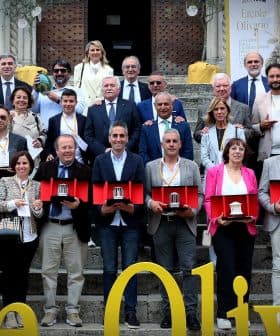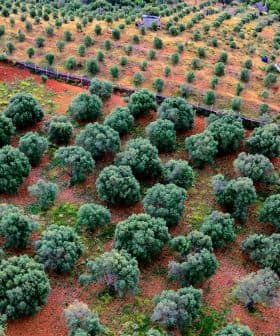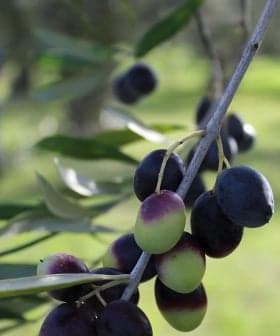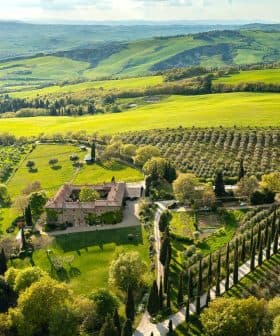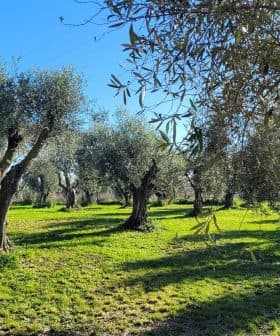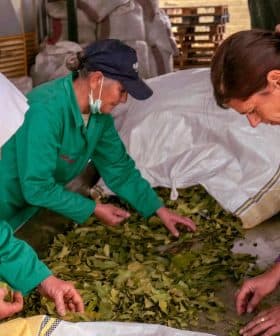Italy's Olive Oil Competitiveness Hindered by Aging Groves
With higher costs and lower yields than modern olive oil farms, quality alone may not be enough to protect Italy's smaller producers in a fast-changing international market.
Italian olive groves are aging, with the majority being over 50 years old and lacking the tree density needed to compete in international markets; some Italian farmers are advocating for the adoption of super-intensive farming methods to increase productivity and reduce costs. The rise of Spain as a major olive oil producer has led to lower prices for high-quality Italian olive oil brands, prompting calls for Europe to redefine extra virgin olive oil standards to protect quality.
Fifty years. That is the minimum age of most Italian olive groves. Sixty-three percent of Italy’s olive tree-cultivated land hosts old olive groves and 42 percent have less than 140 trees per hectare (2.5 acres) — not enough tree density and yield to remain competitive in the fast-changing international markets, where technology and intensive farming are reshaping the sector.
The rise of Spain as the main olive oil producer changed the tables for high-quality Italian olive oil brands. But then we are seeing that prices are pushed to the ground. And that isn’t good for anyone.
In a super-intensive farm, every hectare may hold between 600 and 1,600 trees planted in easily manageable straight rows. That means costs from pruning to harvesting are reduced, while productivity is dramatically increased. It’s time to change, say some Italian farmers and associations.
Renovating, introducing new processing technologies and upgrading production and maintenance will not come easy, say the farmers of Cia-Agricoltori Italiani, the agricultural association, given both the cultural and historical significance of old groves and the traditional business organization of small family farming.
See Also:The Best Olive Oils from Italy“One of the biggest challenges is to push for the aggregation of growers, providing incentives for those able to tackle the entire production chain, from the tree to the olive oil consumer,” said Dino Scanavino, the CIA president.
Today only five percent of all Italian olive farming land is dedicated to intensive farming and just one percent consists of groves five years of age or younger, the CIA noted.
When the European Union in 2014 introduced the EAFRD (European agricultural fund for rural development) and funded €100 billion ($109 billion), the idea was to push for a general renovation of European farming and the introduction of new technologies while making the rural world develop the skills and production means to be a true competitor on the global market.
Many growers have followed the lead, mainly in Spain and Portugal. Not all producers share the same commitment, though.
“Spain is dragging its feet in its own success,” Angelo DalCima, a farmer and olive grower in central Italy told Olive Oil Times. “The rise of Spain as the main olive oil producer, with intensive and over-intensive farming and reduced pruning and harvesting costs, changed the tables for high-quality Italian olive oil brands. But then we are seeing that prices are pushed to the ground. And that isn’t good for anyone.”
Many smaller Italian growers are in areas that are not always fit for intensive farming. The reasons vary from the geographical location on the hills to the historical and landscape contexts. Most olive oil production in Italy comes from the Puglia region but a big share comes from Tuscany, a region where olive oil quality and traditional farming do often come together.
“We tend to believe that traditional olive oil growing means better olive oil quality,” said DalCima. And higher quality is the answer many Italian growers are keen to offer to the changing markets.
That is why associations and agricultural confederations are asking Europe to redefine what extra virgin olive oil means. They want acidity limits to be lowered to 0.4 percent — half of the currently mandated benchmark of 0.8 percent.
“It is fair, we should protect high quality,” DalCima said. Change will come to Italian olive groves, but it will take time. “A whole culture is challenged and who knows if high quality will be enough to protect it.”


